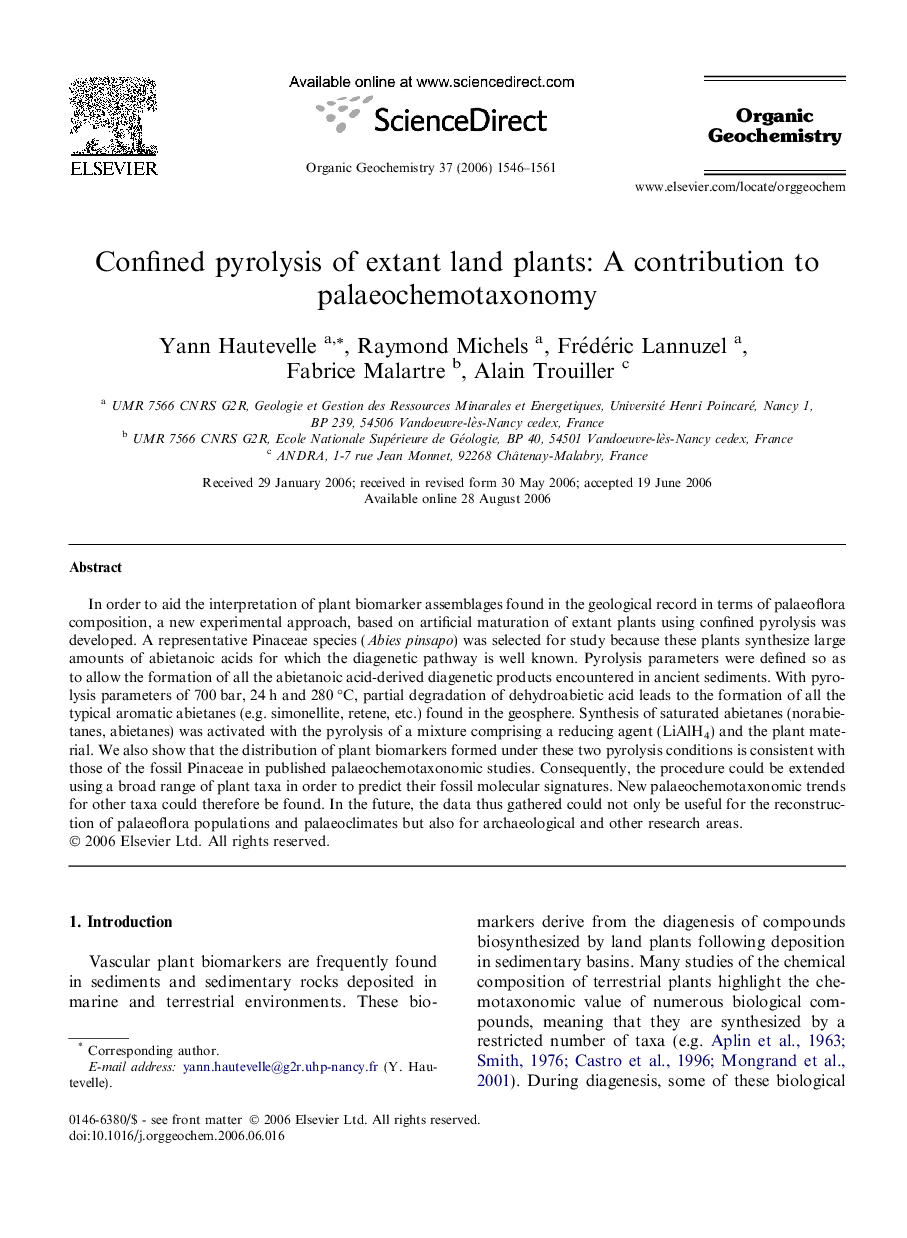| Article ID | Journal | Published Year | Pages | File Type |
|---|---|---|---|---|
| 5163688 | Organic Geochemistry | 2006 | 16 Pages |
Abstract
In order to aid the interpretation of plant biomarker assemblages found in the geological record in terms of palaeoflora composition, a new experimental approach, based on artificial maturation of extant plants using confined pyrolysis was developed. A representative Pinaceae species (Abies pinsapo) was selected for study because these plants synthesize large amounts of abietanoic acids for which the diagenetic pathway is well known. Pyrolysis parameters were defined so as to allow the formation of all the abietanoic acid-derived diagenetic products encountered in ancient sediments. With pyrolysis parameters of 700 bar, 24 h and 280 °C, partial degradation of dehydroabietic acid leads to the formation of all the typical aromatic abietanes (e.g. simonellite, retene, etc.) found in the geosphere. Synthesis of saturated abietanes (norabietanes, abietanes) was activated with the pyrolysis of a mixture comprising a reducing agent (LiAlH4) and the plant material. We also show that the distribution of plant biomarkers formed under these two pyrolysis conditions is consistent with those of the fossil Pinaceae in published palaeochemotaxonomic studies. Consequently, the procedure could be extended using a broad range of plant taxa in order to predict their fossil molecular signatures. New palaeochemotaxonomic trends for other taxa could therefore be found. In the future, the data thus gathered could not only be useful for the reconstruction of palaeoflora populations and palaeoclimates but also for archaeological and other research areas.
Related Topics
Physical Sciences and Engineering
Chemistry
Organic Chemistry
Authors
Yann Hautevelle, Raymond Michels, Frédéric Lannuzel, Fabrice Malartre, Alain Trouiller,
